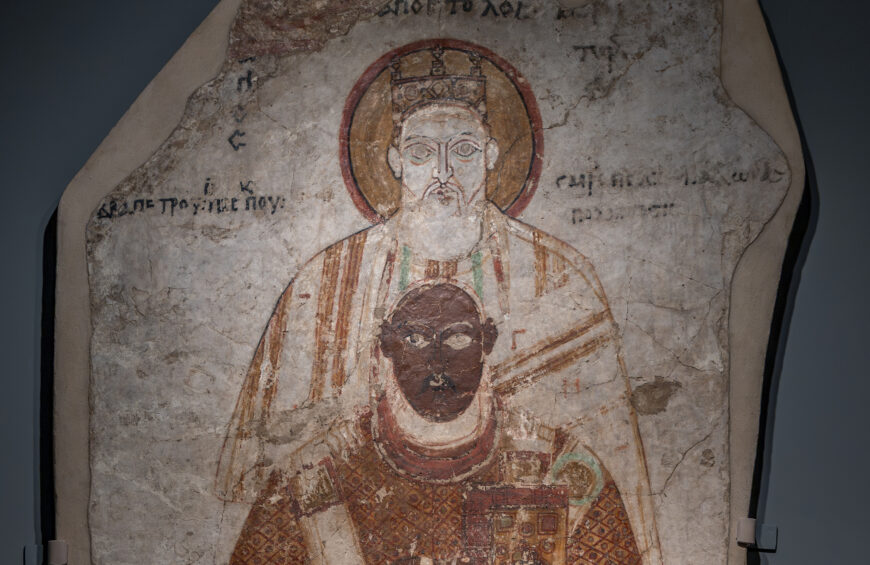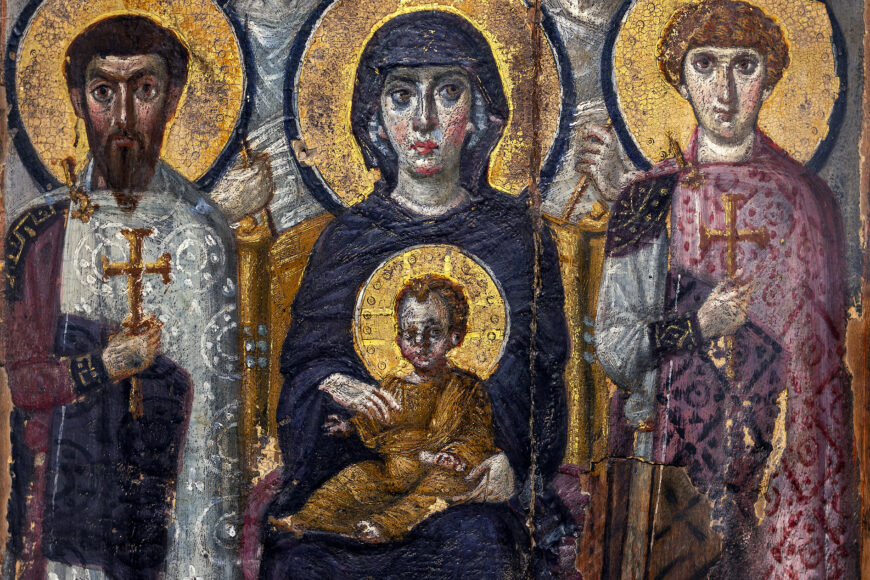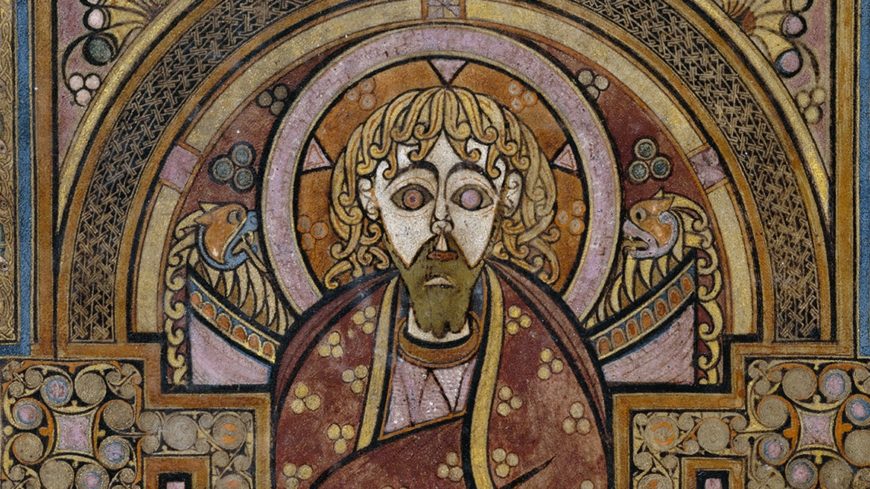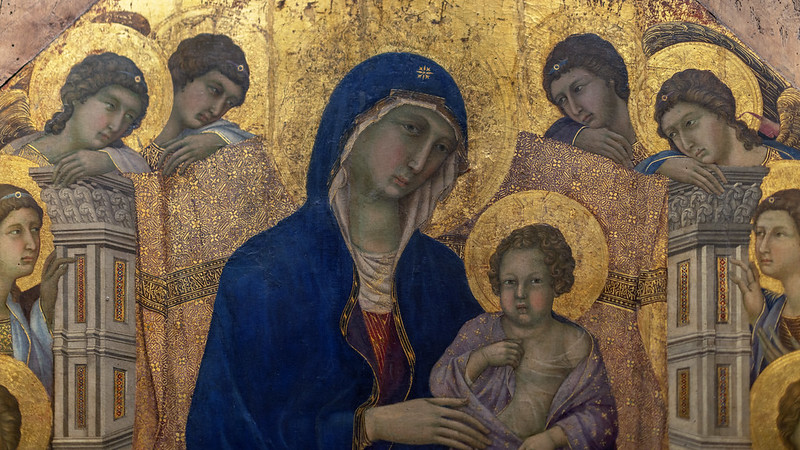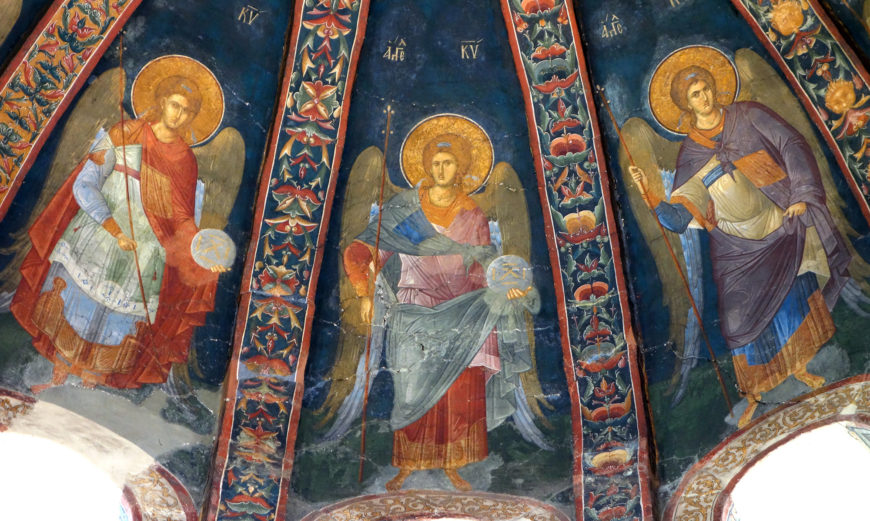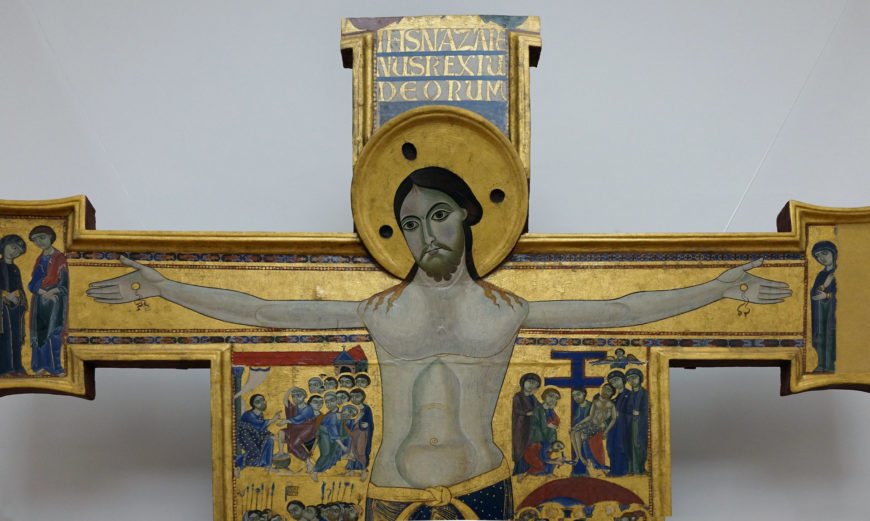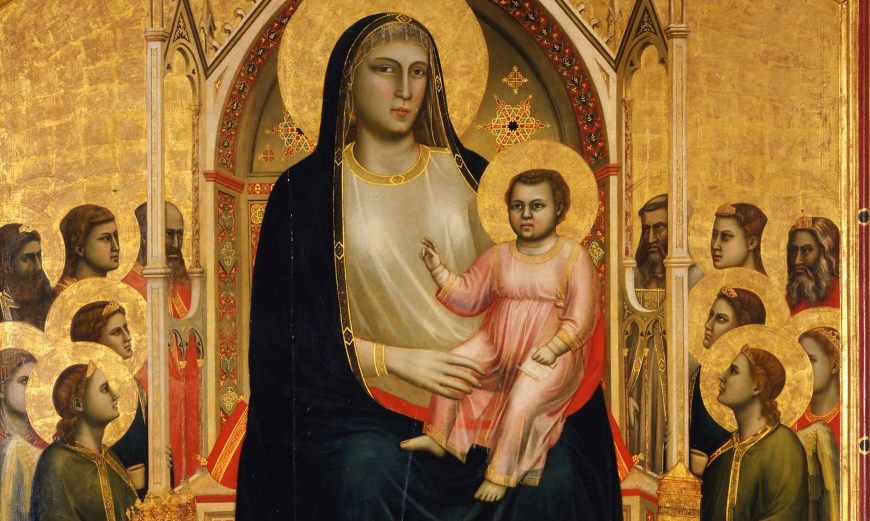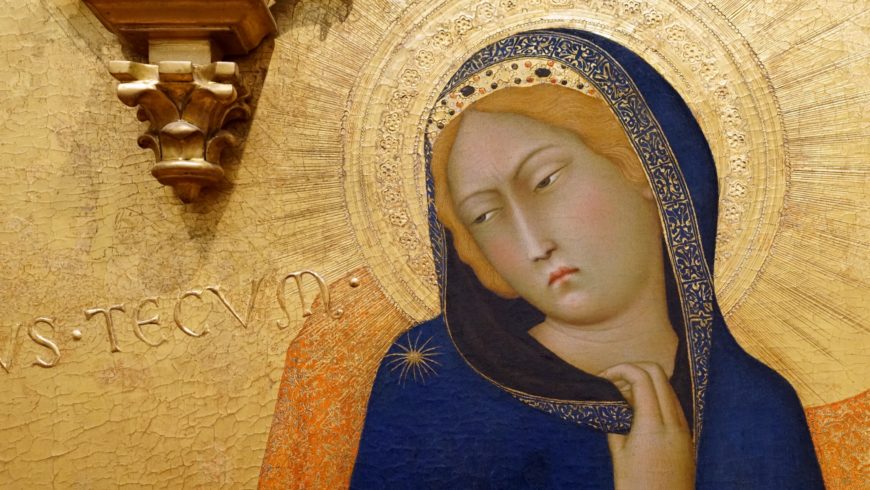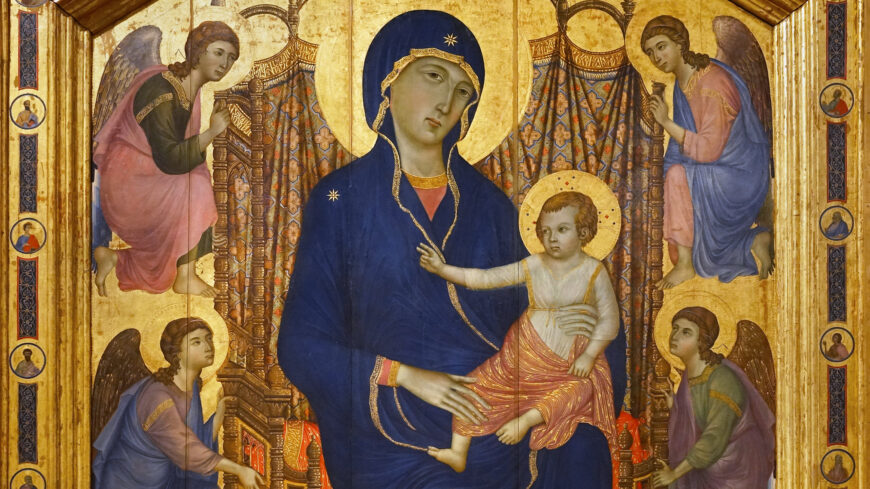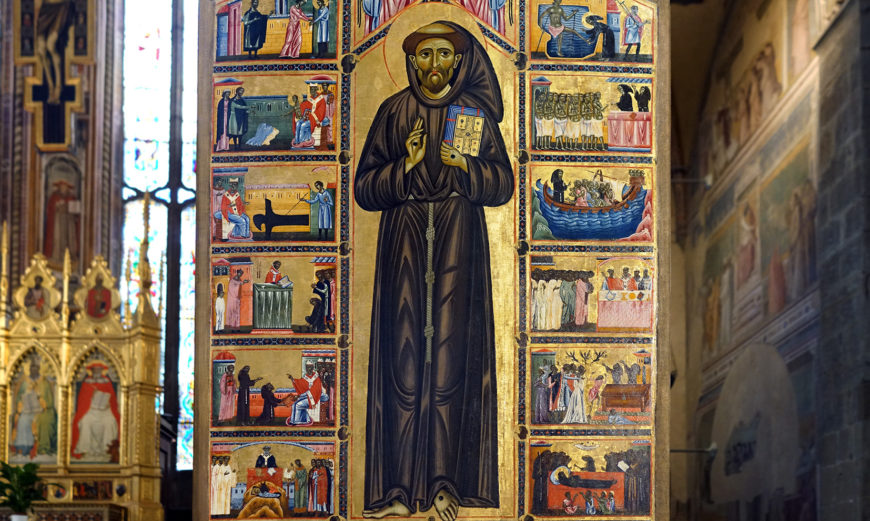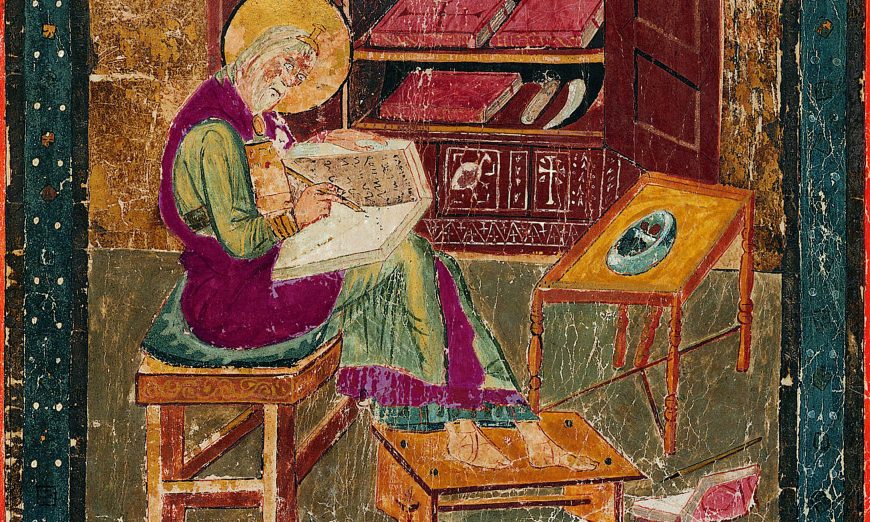Simone Martini, Maestà, 1315–21, fresco, 213 x 396 cm (General Council Room, Palazzo Pubblico, Siena)
Simone Martini, Maestà
[0:00] [music]
Dr. Beth Harris: [0:10] We’re in the general council room in the Palazzo Pubblico in Siena. That is, we’re in the room where the general council, the highest administrative body in Siena, would meet. This building is, essentially, the town hall, the central government building of Siena.
[0:27] So we’re in this incredibly important room where decisions regarding things like war and peace would be made by hundreds of representatives. We’re looking at a fresco by Simone Martini of the maestà.
Dr. Steven Zucker: [0:42] Now, “maestà” means “in majesty,” and that refers to the Virgin sitting with the young Jesus Christ on a throne, surrounded by apostles and saints.
Dr. Harris: [0:47] We also have angels on either side, and they carry bowls with flowers that are being presented to the Virgin Mary.
Dr. Zucker: [0:54] This is a Court of Heaven, and therefore there’s an interesting relationship. The pairing of this Court of Heaven and the legislative council [that] met in this room.
Dr. Harris: [1:04] The impression of this fresco is one of incredible magnificence. We have gold that’s been stamped with beautiful patterns, and the artist has inserted colored and gold glass to make the painting sparkle. And the Virgin Mary is seated on this lovely blue pillow, her garment was at one point much more deeply colored, these are all very expensive pigments.
Dr. Zucker: [1:36] There’s also a degree of elegance that is consistent with 14th-century Sienese painting. The figures are elongated, their hands are impossibly long, the noses are impossibly long. The figures are almost dance-like in their presentation.
Dr. Harris: [1:52] Just like we see in Duccio’s earlier important altarpiece for the Cathedral of Siena, we see the Virgin enthroned here surrounded by saints and angels and apostles, all located within the same space.
Dr. Zucker: [2:04] That is further emphasized by that beautiful canopy they all are sharing, this ceremonial space, and in a sense sharing it with the people who occupied this room. And even now in the 21st century with us.
Dr. Harris: [2:19] We would be remiss if we didn’t explain why the Virgin appears here in this space. First of all, we’re not in a church. We’re in a secular, political space.
Dr. Zucker: [2:24] This is the town hall of Siena.
Dr. Harris: [2:34] The Virgin held an incredibly important role for the people, the citizens of the commune, the city of Siena. She was its protectress, she was who the people of Siena, the government of Siena, turned to for blessing and protection.
Dr. Zucker: [2:43] This should not be seen as a purely religious painting. There is a real effort to make this subject matter appropriate to this civic environment.
Dr. Harris: [2:53] Three of the four local saints once held scrolls or texts that are barely visible today, likely petitions to the Virgin Mary on behalf of the government, the citizens. And that text continues below.
[3:12] The reply of the Virgin to the said saints, “My beloved, bear it in mind when your devotees make honest petitions. I will make them content, as you desire. But if the powerful do harm to the weak, your prayers are not for these, not for whoever deceives my land.”
Dr. Zucker: [3:27] Siena was a proud republic, and here the Virgin Mary is making clear that she is here to oversee the common good.
Dr. Harris: [3:35] It was important to Siena that it be ruled justly and that no one single person should be allowed to gain undue political power.
[3:46] The idea was a constant rotation of those who represented the citizens of Siena and the idea of just rule, which we also see in the room next door, the Room of the Nine, who were the main governing body of Siena.
[0:00] [music]
| Title | Maestà |
| Artist(s) | Simone Martini |
| Dates | 1315–21 |
| Places | Europe / Southern Europe / Italy |
| Period, Culture, Style | Medieval / Gothic / Late Gothic |
| Artwork Type | Painting |
| Material | Gold, Pigment, Plaster |
| Technique | Fresco |
Loading Flickr images...


